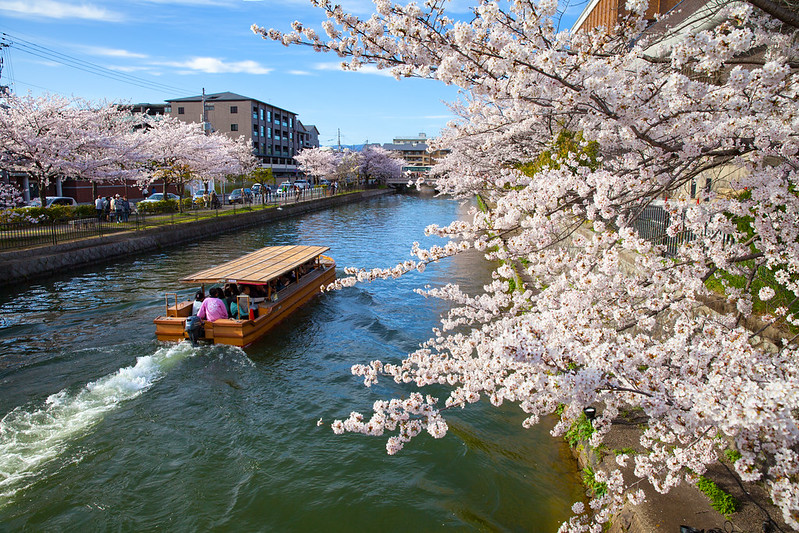
The Timeless Lake Biwa Canal
 Hydroelectricity, a green source of power, is electricity generated by hydropower (the production of electrical power using the gravitational force of flowing water). It is one of the most widely used forms of global renewable energy. Lake Biwa Canal (琵琶湖疏水) or Biwako Sosui is the canal that supplied Japan with its first ever hydroelectric power generator.
Hydroelectricity, a green source of power, is electricity generated by hydropower (the production of electrical power using the gravitational force of flowing water). It is one of the most widely used forms of global renewable energy. Lake Biwa Canal (琵琶湖疏水) or Biwako Sosui is the canal that supplied Japan with its first ever hydroelectric power generator.
Lake Biwa Canal circa 1902.
Lake Biwa Canal was constructed during the Meiji Period to transport freight, passengers, and water from Lake Biwa to Kyoto. It also provided electricity for the trams in Kyoto.
The Meiji Restoration followed by the transfer of Japan’s capital city to Tokyo greatly impacted the growth and economic boom Kyoto was initially experiencing. The city soon suffered a decrease in population and industrial progress. Kitagaki Kunimichi, the third Prefectural Governor of Kyoto, ordered and supervised the construction of Lake Biwa Canal to gain back some economic stability for Kyoto.
The Lake Biwa canal waterways run from the vicinity of the Buddhist temple Mii-dera in Ōtsu, Shiga, all the way to its end destination near Nanzen-ji (a Zen Buddhist temple in Kyoto). The tunnels wind through mountains and in between the two cities. The canal has two routes: Canal No. 1 or Dai-ichi sosui and Canal No. 2 or Dai-ni sosui. Since there was a-36 meter difference in elevation between the dam that went upstream and its end destination, an inclined plane was built to allow boats to travel on land using a flat car where the boats were placed.
Incline railroad by the Biwa Lake Canal.
Lake Biwa Canal served from 1895, and operation of the 9 ft track gauge incline stopped in 1948. Some parts of its structure has been preserved and now serve as a tourist attraction and the area is famous for its beautiful cherry blossom trees.
The development of Japan’s railway station and roads made Lake Biwa Canal obsolete by the 1940s. But the canal’s history and beauty remains a unique Japanese asset. In 1996, the canal was designated a Historic Site. Since 2008, even if the waterway is not used so much to generate electrical power, it is still used for water supply, fire-fighting, and irrigation purposes.
